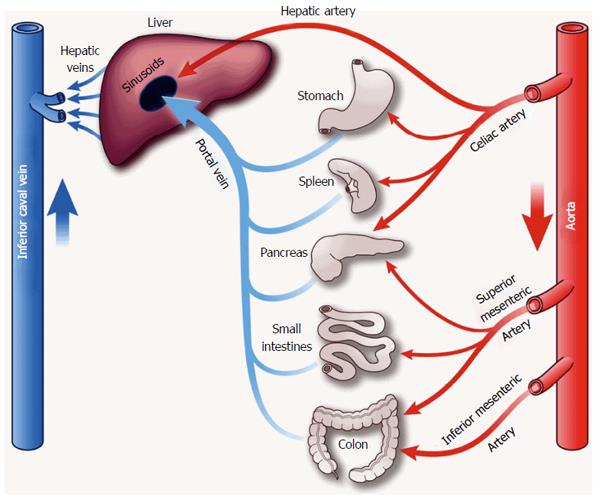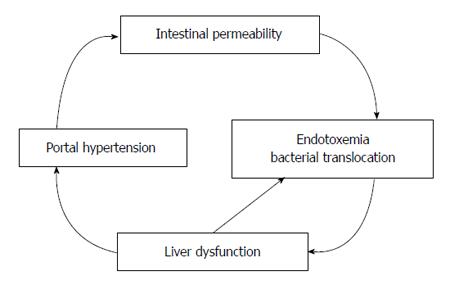Copyright
©The Author(s) 2015.
World J Gastroenterol. Mar 7, 2015; 21(9): 2582-2592
Published online Mar 7, 2015. doi: 10.3748/wjg.v21.i9.2582
Published online Mar 7, 2015. doi: 10.3748/wjg.v21.i9.2582
Figure 1 Anatomy of the splanchnic, portal and hepatic venous circulation.
(With permission: Gelman S, Mushlin PS. Catecholamine-induced changes in the splanchnic circulation affecting systemic hemodynamics. Anesthesiology 2004, 100: 434-439).
Figure 2 Damage to the intestinal barrier leads to bacterial translocation and endotoxaemia and thus to impairment of liver function and increase in portal pressure, possibly causing further damage to the gut: a vicious circle.
(With permission: Thalheimer U, Triantos CK, Samonakis DN, Patch D, Burroughs AK. Infection, coagulation, and variceal bleeding in cirrhosis. Gut 2005; 54: 556-563).
Figure 3 Endotoxaemia, bacterial translocation, and bacterial infection may be different expressions of the same process at different degrees of severity, and are associated with increasingly severe complications.
NO: Nitric oxide; TNF-α: Tumor necrosis factor-α. (With permission: Thalheimer U, Triantos CK, Samonakis DN, Patch D, Burroughs AK. Infection, coagulation, and variceal bleeding in cirrhosis. Gut 2005; 54: 556-563).
- Citation: Prin M, Bakker J, Wagener G. Hepatosplanchnic circulation in cirrhosis and sepsis. World J Gastroenterol 2015; 21(9): 2582-2592
- URL: https://www.wjgnet.com/1007-9327/full/v21/i9/2582.htm
- DOI: https://dx.doi.org/10.3748/wjg.v21.i9.2582











